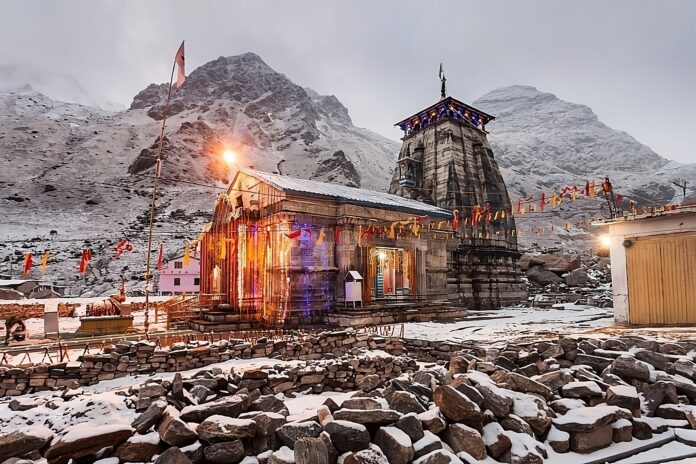The majestic Himalayan peaks, Kedarnath Temple stands as a testament to India’s rich cultural heritage and profound spiritual significance. Perched at an elevation of 3,583 meters (11,755 feet) above sea level, this ancient shrine is not just a place of worship but a symbol of unwavering faith and an epitome of natural beauty. In this blog, we embark on a virtual journey to the sacred land of Kedarnath, uncovering the history, significance, and enchanting allure of this revered temple.
Historical Significance:
The origins of Kedarnath Temple trace back to Hindu mythology and the legendary story of Lord Shiva. According to the ancient texts, the Pandava brothers sought forgiveness from Lord Shiva for their role in the Kurukshetra war. Shiva, wishing to evade them, took refuge in the form of a bull at Kedarnath. When pursued, he dived into the ground, leaving behind his hump on the surface. The present-day shrine is believed to enshrine the remains of that hump.
Architectural Marvel:
Kedarnath Temple’s architecture exudes a rustic charm that seamlessly blends with its natural surroundings. Constructed using massive stone slabs and timber, the temple’s walls are intricately adorned with sculptures and carvings depicting various deities and mythological scenes. The main sanctum houses a conical-shaped lingam, representing Lord Shiva, and is believed to radiate immense spiritual energy.
Spiritual Pilgrimage:
Kedarnath is a place where spirituality and nature converge, offering devotees an unparalleled opportunity to connect with the divine in a serene environment. The journey to Kedarnath is not merely a physical one; it is a soul-stirring experience that demands dedication and determination. The traditional pilgrimage route involves a trek of approximately 16 kilometers from Gaurikund, with breathtaking views of snow-capped peaks, verdant valleys, and gushing rivers along the way.
The Char Dham Yatra:
Kedarnath Temple is an integral part of the Char Dham Yatra, a sacred journey that also includes Badrinath, Yamunotri, and Gangotri. Pilgrims from all corners of India undertake this arduous pilgrimage, seeking blessings and salvation. The Char Dham Yatra is believed to cleanse one’s soul, wash away sins, and pave the path to moksha (liberation).
The Resilience of Kedarnath:
In 2013, Kedarnath witnessed a catastrophic natural disaster when flash floods and landslides devastated the region. The temple complex was severely affected, along with surrounding infrastructure. However, the indomitable spirit of restoration and the collective efforts of the government, locals, and devotees led to the resurrection of Kedarnath. The reconstructed temple now stands as a symbol of human perseverance and devotion.
Beyond the Temple:
While Kedarnath Temple is undeniably the focal point of this sacred town, the area offers more than just religious experiences. Nature enthusiasts can explore the stunning landscapes through trekking trails, such as the Vasuki Tal and Chorabari glaciers. The purity of the Mandakini River and the peaceful charm of the town provide ample opportunities for meditation and self-reflection.
Conclusion:
Kedarnath Temple is not merely a place of worship; it’s a sanctuary where spirituality and nature harmonize to create an environment of transcendence. Its rich history, architectural marvel, and breathtaking surroundings make it a destination that captures the hearts of pilgrims and travelers alike. The journey to Kedarnath is more than a physical expedition; it’s a spiritual quest that leaves an indelible mark on the soul, reminding us of the profound connection between mankind, the divine, and the natural world.


